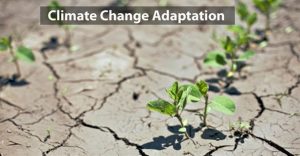
The United Nations Framework Convention on Climate Change (UNFCCC) provides a well written and concise summary on the topic of climate change adaption. The UNFCCC defines climate change adaptation as the processes, practices, and structures that countries must undertake in order to reduce a country’s vulnerability to climate change (UNFCCC 2017). However, the severity and types of adaption measures will be different for every country as detailed by the UNFCCC. A balance between cost management and efficiency will be needed in all applied scenarios in order to maximize the adaption efforts.
The UNFCCC recognizes that climate change adaptation must be dealt with at international, regional, national, and local levels and that all groups, including minorities, indigenous peoples, marginalized peoples, etc., must be accounted for. The system in which countries are recommended to adapt to climate change is detailed as beginning with assessing the impacts and risks brought on by the changing climate. Following this assessment, a plan for adaption is composed, taking into account costs and benefits of the plans. Then the plan is implemented on all the necessary levels (international, national, local, etc.) with policies and strategies being developed as needed to carry out the climate adaption plans. Lastly, the adaption plans are monitored and evaluated in order to better improve upon and make adjustments as needed to improve adaption methods while gaining / spreading knowledge to other institutions to better handle climate change issues around the world.
The UNFCCC details some of the issues that countries are currently or will have to face in the future as the climate change worsens. Agricultural systems will be stressed as rainfall patterns such as rates of evaporation, runoff, and soil moisture change. Forests will face issues as the number of insects, wildfires, droughts, and intensive storms increase which will negatively affect overall ecosystem health. Water resources will become more limited as the amount of water falls and more pressure is put on those water sources left available. Lastly, coastlines will become inundated by rising sea levels, flood surges will become more frequent, and the widening of eroding river banks will worsen.
To help combat climate change, the UN has created several programs to assist countries that are less able to make these adaptions. LDCs are the least developed countries that are the most incapable of dealing with the changing climate. National adaption programs of actions (NAPAs) are developed for these LDCs to help identify and respond to each country’s adaption needs. The Least Developed Countries Fund (LDCF) was established to garner funds and support to help implement adaption programs in addition to the Least Developed Countries Group (LEG) to help provide advice and technical support to countries in need.
Climate Change Adaption efforts as detailed by the UNFCCC are important for providing some of the best and most relevant information / data to deal with climate change. And as new data is collected, the UNFCCC will continue to update and provide more of this relevant information as needed to more efficiently deal with climate change. As climate change worsens, more and more countries will become more vulnerable which will make these adaption methods and strategies provided by the UNFCCC more and more valuable.
Work Cited
United Nations. “United Nations Framework Convention on Climate Change EHandbook.” 2017.
